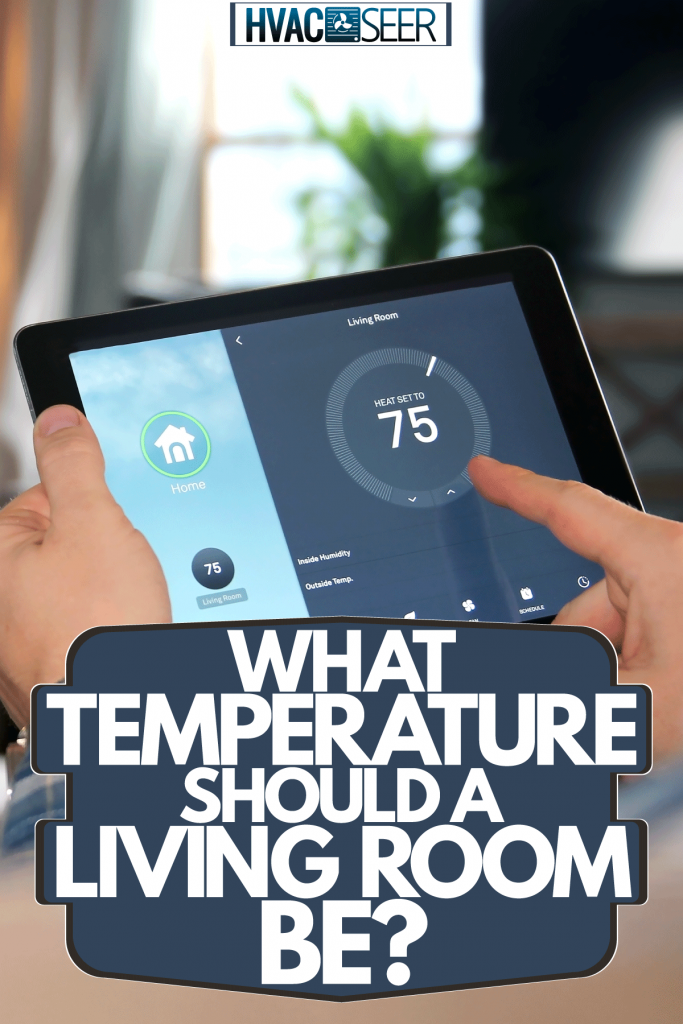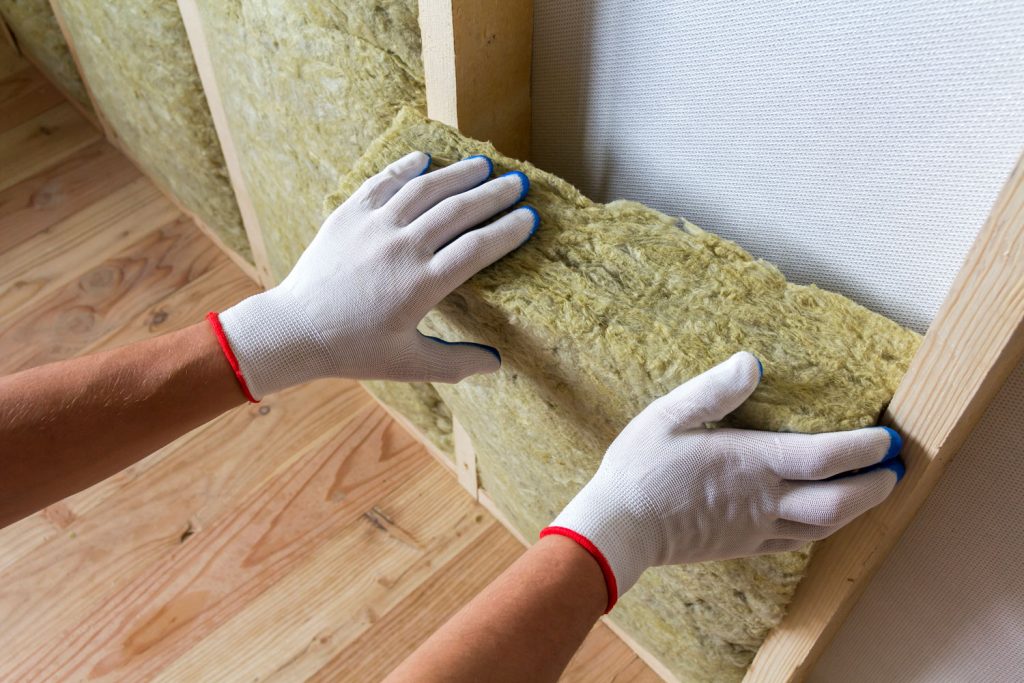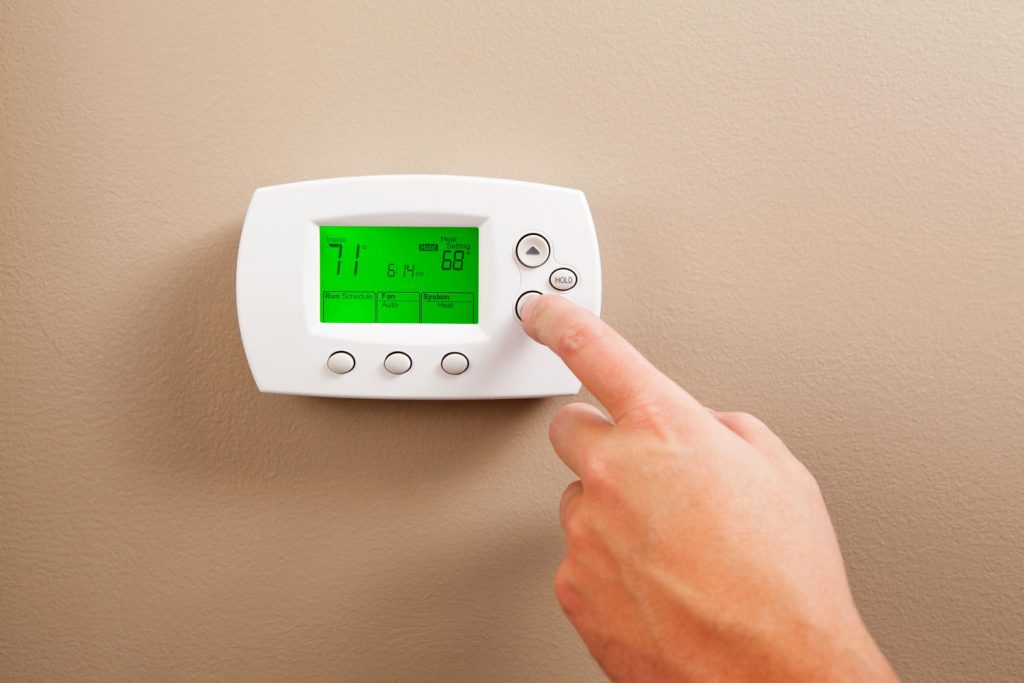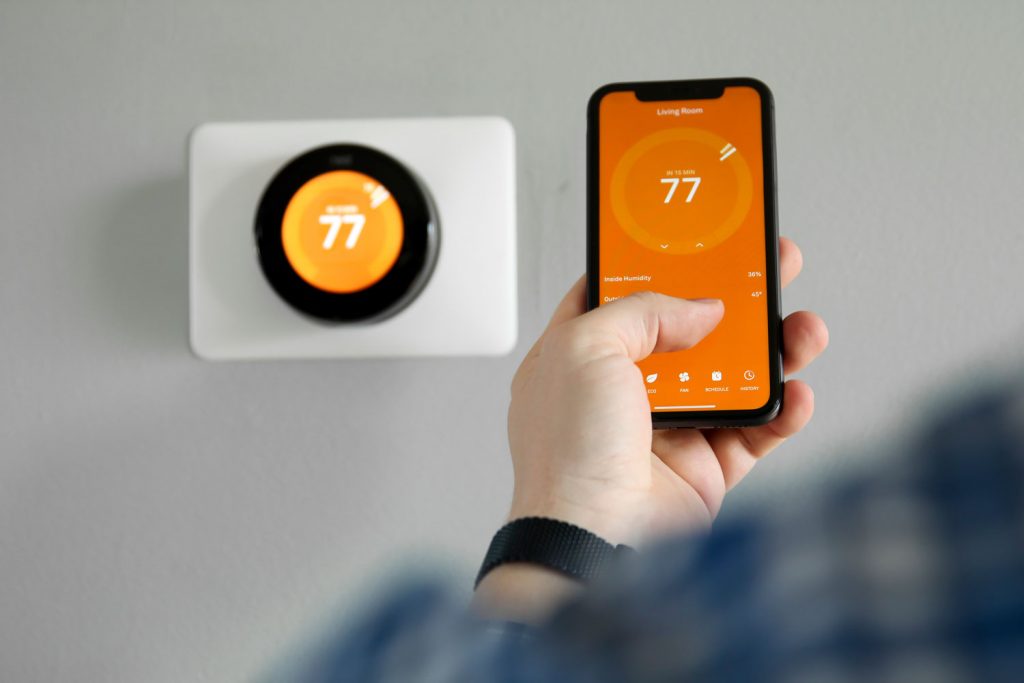Dealing with that one family member who cannot stop lowering the thermostat to an Arctic-like temperature is perhaps more difficult than dealing with the blazing heat itself. As you argue what temperature is comfortable, the question of the ideal living room temperature might cross your mind. If that is the information you seek, we have researched the issue and found some answers.
The temperature of a living room should ideally fall between 64 degrees Fahrenheit up to 75 degrees Fahrenheit (18 to 24 degrees Celsius). This range maintains a balance between hot and cold temperatures. It grants you not only temporary relief but also long-term protection against most respiratory and cardiovascular diseases. Depending on age, you can shift between this range as per the season.
- An average healthy adult can handle temperatures from 73 to 75 degrees Fahrenheit.
- For winters, one may differ towards the lower limit and maintain a 64 to 68 degrees Fahrenheit temperature, but not a degree lower.
If you would like to structure your living room temperature to particular individual needs, you must be looking for more insight. Understanding what factors affect temperatures and how you can effectively counter them is the first step towards comfort. To find out more, keep reading ahead.

Factors Affecting Temperature
Every so often, people overlook the individual needs of household members in their enthusiasm towards setting a standard temperature. While the ideal range is 64 to 75 degrees Fahrenheit, examining all the involved factors before settling on an idea is advised. Through these considerations, you will make sure you and your guests are comfortable.
Age Group and Health
Different age groups within the family correspond to different temperature needs. A temperature greater than 64 degrees Fahrenheit (18 degrees Celsius) is the ideal range for the elderly, children, and people with cardiovascular/respiratory history. For an average individual with no significant medical history, the standard temperature range mentioned above works well. The temperature for infants must be a degree or two warmer than that of adults.
Individual Preferences
Individuals of the same age and medical history are still subject to different temperature preferences. Many would bring the argument of how human body temperature is a standard here. However, with various body sizes, shape, body fat, even metabolic rates, the number of factors impacting the ideal temperature are vast. Thus, before settling on a specific temperature, make sure you evaluate how other individuals may respond.
House Architecture
Consider a traditional two-story home regulated around a single thermostat. If your room is on the upper level of the house, you will likely experience a warmer temperature. Similarly, should your room be placed the farthest from the central thermostat, you will feel a noticeable difference from the standard range.

Another factor that can influence the temperature range in your home is insulation. If your home is poorly insulated, you will find yourself wasting more energy trying to raise or lower the temperature. It might be as simple to spot as some rooms can be colder/warmer than others. However, you should seek professional help before you make any changes.
Read more: 9 Types Of Thermal Insulation You Should Know
The accessibility of the outdoors from your indoor space also contributes to the overall temperature. The position of the windows in your room, the amount, and their size are all crucial components. Rooms that tend to have several large windows will have more sun exposure. More sun exposure means the temperature will naturally be higher in the room. It can also be colder if your windows do not properly seal.
For rooms that lack windows, improving air circulation can help regulate temperature. For more information, check out this post: How To Improve Air Circulation In A Room Without Windows
Passive Forms Of Temperature Regulation
A central heating system is generally a great addition to a home. Consisting of ACs, thermostats, radiators, and ventilation, the system is an active means for fulfilling your needs. What if, however, their effort goes to waste simply because of the absence of a significant preliminary step? That is, ensuring the passive modes first.
Here’s how you can assess the availability of enough passive means of ventilation in your house:
- Position fresh-air and exhaust vents around your home in a way that makes sense. Areas with constant activity like living rooms, bedrooms, and study rooms should have vents.
- Equip the areas of direct exposure to the sun with static roof louvers. You may close the vent to trap the warmth within the house in the winters. It combats excess heat in the summers by exhausting it through the thermal bypasses in the ceilings.
- Rooms with cross-sided ventilation are a bonus but look for single-sided ventilation at the least. Not only does it provide fresher breathing space, but it also reduces the cost of HVAC systems.
How To Set An Ideal Temperature
Next, we will discuss ways of implementing ideal temperatures and how they can be cost-saving. Some word of advice before getting started, set a budget, stick to it, and add or subtract things based on your actual needs. Every bit of energy consumption will show up in your bills, but that doesn’t mean there are no ways to reduce it.
A Thermostat Is Your Friend

The way thermostats function is simple. It is a device that functions as an alarm for the central boiler to adjust to temperature changes. Recent technological advancements have made thermostats a lot easier to program.
Programmable Thermostats

Suppose you have spent days evaluating the pros and cons of different temperature ranges and finally found the ideal fit for your house. However, what if you have to leave your home for a certain period? What options do you have except for shutting down the thermostat to save money while you’re away? You might come back home to a living room that is too hot or cold based on the season. That is where a programmable thermostat can come in handy.
Customize a schedule, preset your preferred temperature for different rooms, and come back home to a comfortable home. Some thermostats can also track your behavioral pattern so they can raise or lower the temperature at an established time.
What Temperature Is Too Cold For A House?
With so much discussion around ideal temperatures, what about non-ideal temperatures? No matter what level the outdoor temperature may drop to, the World Health Organization suggests the minimum threshold for cold temperature in a home is 64 degrees Fahrenheit (18 degrees Celsius). However, the elderly and infants can not tolerate this range. To avoid risking their health, we suggest maintaining a temperature of 70 degrees Fahrenheit.
What Is An Unhealthy Temperature Range?
Anything falling out of the suggested range can be dangerous depending on the sensitivity of an individual. Some individuals may survive a few-degree shift but, the minute your surroundings begin to deviate towards the extremes, you are at risk of morbidity and even mortality. High indoor temperatures that stretch up to 86 degrees Fahrenheit (30 degrees Celsius) or more, in particular, are the unhealthiest.
What Is The Most Comfortable Room Temperature?
After a fair amount of discussion over the factors affecting everybody’s ideal temperature, a harmonious way out is needed. So, what is that precise temperature that is certain to suit everyone in general? It is anything that falls near 68 to 70 degrees Fahrenheit. However, the answer to this question is subjective.
Some would prefer warmer ranges while others like colder ones. To give people a little more leeway, you can set your limits from 66 to 71 degrees Fahrenheit. As always, consider who is living with you first before you stick to a temperature.
Final Takeaway
The ideal temperature is a tricky topic. There are so many factors that come into play. However, if you consider others, you can come to an agreement where everyone can be comfortable. That might not always be the case because some seem to like living in Arctic/Sahara-like climates. We hope you found the article informative and insightful, until next time!
